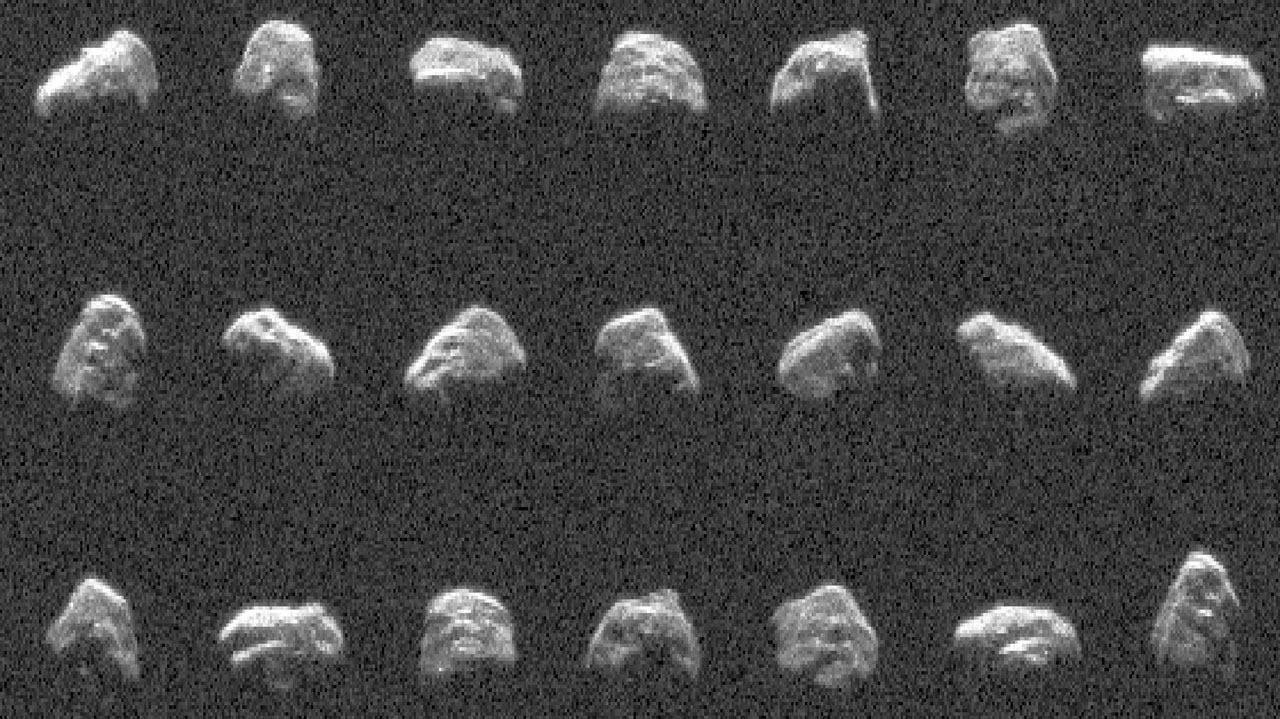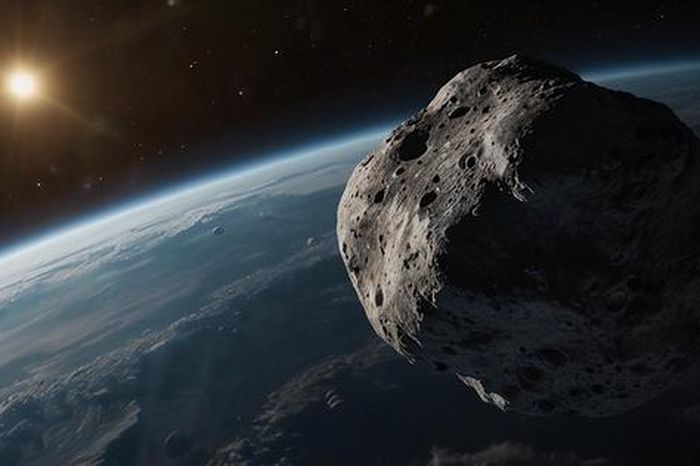Scientists have released detailed images of an asteroid that just passed Earth at close range
'Asteroid hunters' around the world have closely followed this pair since before they passed Earth, and were even assisted by NASA's state-of-the-art equipment to take photos to find out more. more about asteroids, including those that could potentially threaten Earth in the future.
These two asteroids are named 2024 MK and 2011 UL21, named after their respective years of discovery. Both 'quietly' approached Earth at a dangerous distance on June 27 and 29. Of these, 2011 UL21 has a diameter of nearly a mile wide and approached Earth at its closest point of 4.1 million miles and – large and close enough to classify this as a potentially dangerous situation. However, by analyzing data on the asteroid's orbit, astronomers have put the numbers into perspective and determined that it is unlikely that 2011 UL21 could impact Earth, at least is in the near future.
 Scientists have released detailed images of an asteroid that just passed Earth at close range Picture 1
Scientists have released detailed images of an asteroid that just passed Earth at close range Picture 1
In the moment the asteroid passed by at its closest distance, it was closely observed by global astronomy researchers. A group of scientists at NASA used one of the radars of the Deep Space Network system (being used by NASA to communicate with spacecraft in deep space) to track the asteroid using radio waves and study it. save it. They discovered that the asteroid is actually part of a pair called a binary system, with a small satellite orbiting it at a distance of about 2 miles.
According to scientists' estimates, about two-thirds of asteroids of this size are binary, and their discovery is especially important in applying measurements of the relative position of the asteroid. planets to estimate their orbits, masses and general densities, thereby providing important information about how they form and function.
The second asteroid, 2024 MK, passed by Earth even closer: Just 284,000 miles, which is even shorter than the distance between Earth and the Moon. 2024 MK is quite small in size, with a width of only about 152m, elongated and angular shape. Researchers used the same radio wave method to observe the planet's complex, jagged surface. This is a unique opportunity to study the physical properties and obtain detailed images of a near-Earth asteroid.
You should read it
- The asteroid is similar in size to the Pyramids of Giza, and is likely to crash into Earth on May 6, 2022
- NASA has just discovered an asteroid with an extremely 'weird' shape
- NASA's spacecraft soared to the asteroid that could destroy the Earth for specimens
- A meteor with a speed of 32,000 km / h is approaching Earth's orbit
- Detecting an asteroid the size of an olympic swimming pool, topping the list of Earth collision risk
- Interesting discoveries about asteroids in the solar system
- Why did NASA choose Bennu as a model asteroid?
- NASA wants to make spacecraft parts right on low Earth orbit
- NASA will launch new space telescope into space to find 'second earth'
- Unknown things about asteroid belt
- 'City killer' 610 m rushes to Earth, can be seen tonight
- The whole scene of meteorites hitting the Earth during the past 33 years, why can't we feel it?
May be interested

Admire the colorful moment of a star in the making

Admire stunning images showing the strange phenomenon of the Serpens Nebula

Strange discovery: The famous star that has been observed a lot so far turns out to be a pair of twins

Satellites captured unprecedented images of a giant piece of space junk

Why is it rare to see pilots with beards?

Astronomer James Webb finds the most distant galaxy ever observed






 'City killer' 610 m rushes to Earth, can be seen tonight
'City killer' 610 m rushes to Earth, can be seen tonight The asteroid is similar in size to the Pyramids of Giza, and is likely to crash into Earth on May 6, 2022
The asteroid is similar in size to the Pyramids of Giza, and is likely to crash into Earth on May 6, 2022 Asteroid half the size of a football field threatens Earth in 2032
Asteroid half the size of a football field threatens Earth in 2032 Asteroid 2024 YR4's risk of colliding with Earth is increasing
Asteroid 2024 YR4's risk of colliding with Earth is increasing A meteor with a speed of 32,000 km / h is approaching Earth's orbit
A meteor with a speed of 32,000 km / h is approaching Earth's orbit Interesting discoveries about asteroids in the solar system
Interesting discoveries about asteroids in the solar system